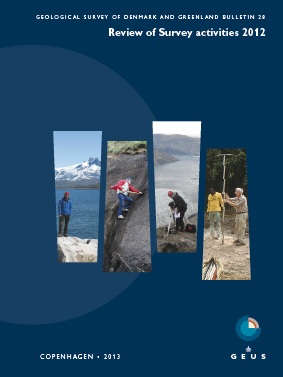The norite belt in the Mesoarchaean Maniitsoq structure, southern West Greenland: conduit-type Ni-Cu mineralisation in impact-triggered, mantle-derived intrusions?
DOI:
https://doi.org/10.34194/geusb.v28.4722Abstract
With the recent discovery of the giant, deeply eroded, 3 Ga Maniitsoq impact structure in southern West Greenland (Garde 2010), an enigmatic, c. 75 by 15 km large, curvilinear belt of undeformed norite intrusions with Ni-Cu mineralisation was re-interpreted as representing crustally contaminated melts derived from the mantle in the wake of the impact (Fig. 1; Garde et al. 2012). The norite belt (Nielsen 1976; Secher 1983) was discovered in the early 1960s by the mining and exploration company Kryolitselskabet Øresund A/S, and more than one hundred shallow exploration holes were drilled by the company in the period 1965–1971. The mineralisation has subsequently been investigated by Cominco Ltd., Falconbridge Ltd. and NunaMinerals A/S. In 2011, the re-interpretation of the norite belt, and recent availability of improved airborne geophysical exploration tools, prompted the Canadian company North American Nickel Inc. (NAN) to resume exploration.
Downloads
Downloads
Published
How to Cite
Issue
Section
License
GEUS Bulletin is an open-access, peer-reviewed journal published by the Geological Survey of Denmark and Greenland (GEUS). This article is distributed under a CC-BY 4.0 licence, permitting free redistribution and reproduction for any purpose, even commercial, provided proper citation of the original work. Author(s) retain copyright over the article contents. Read the full open access policy.







